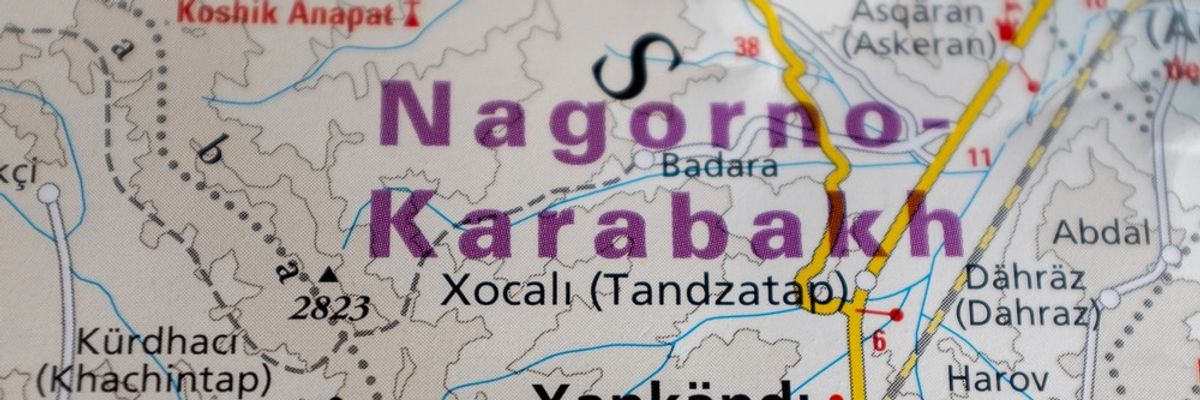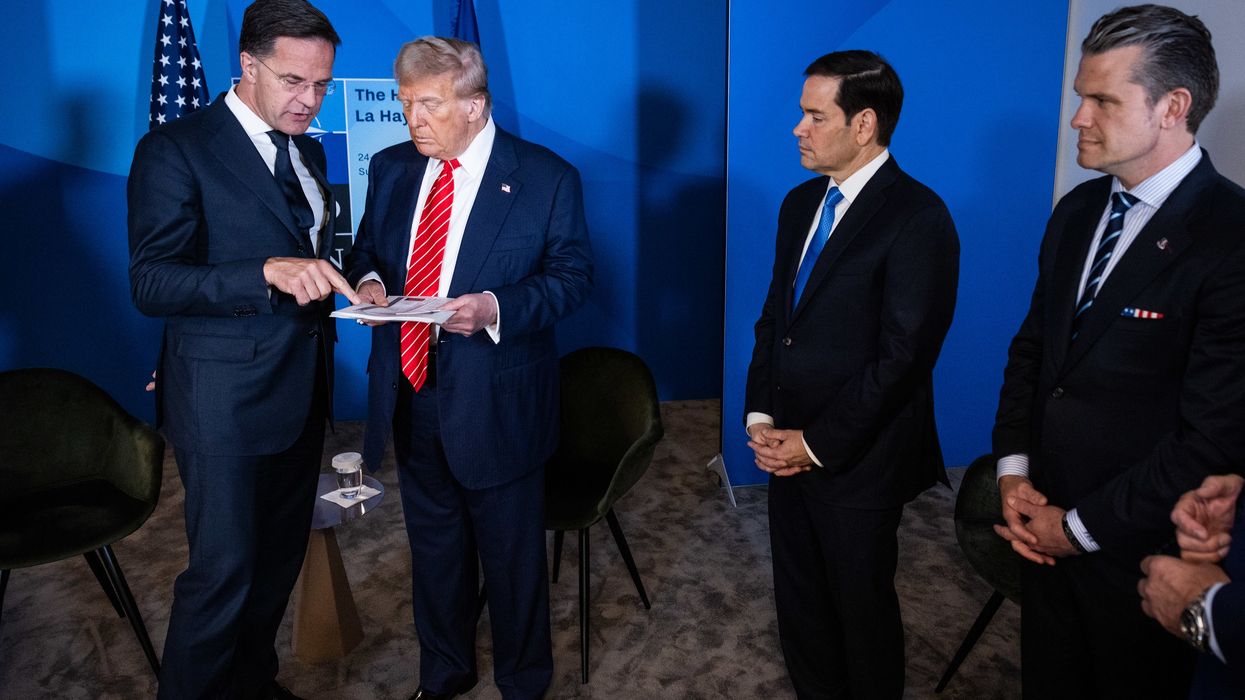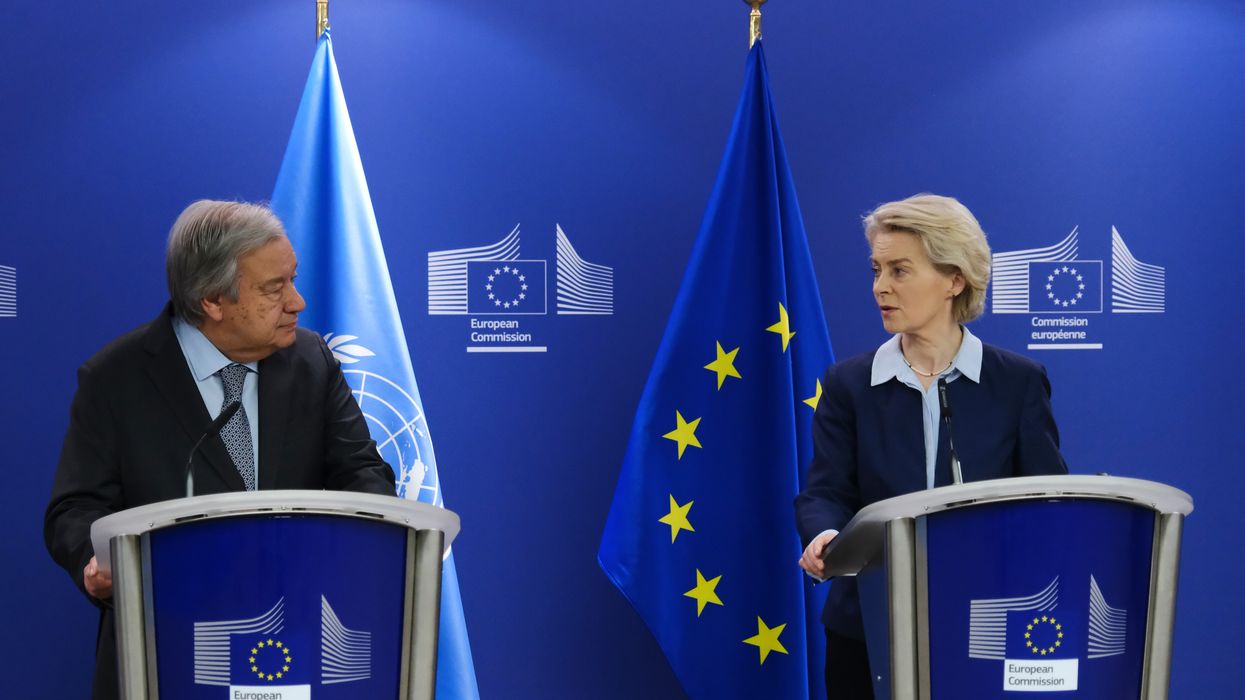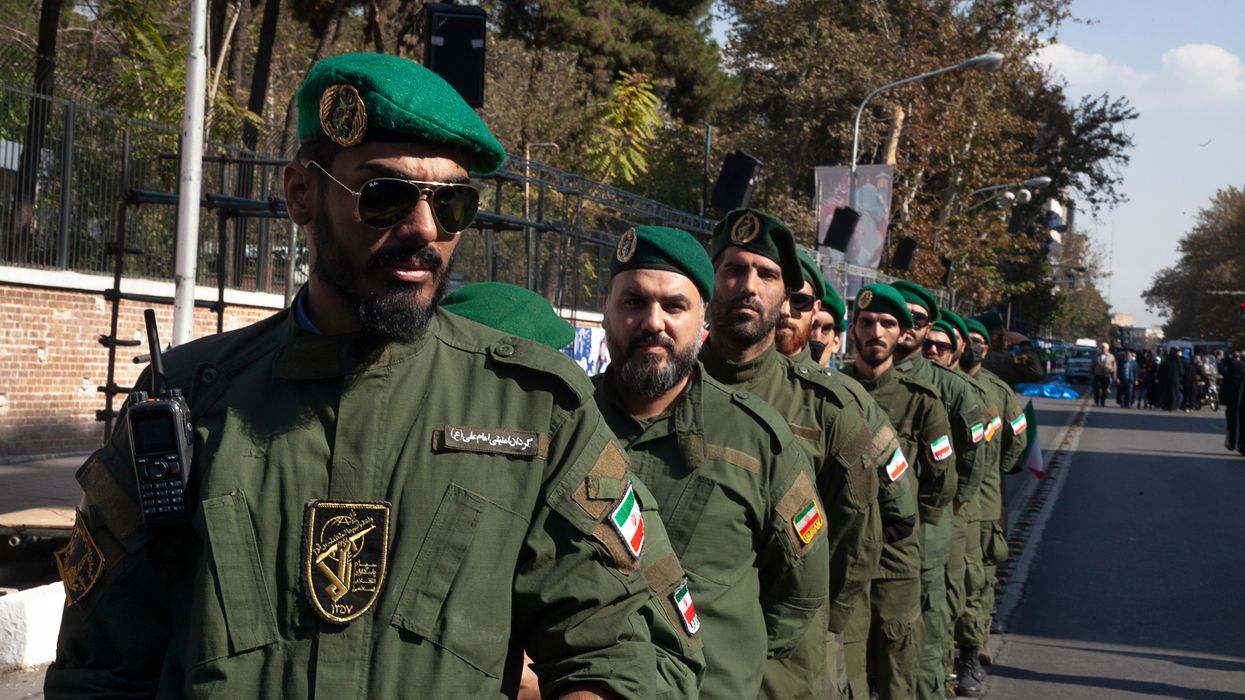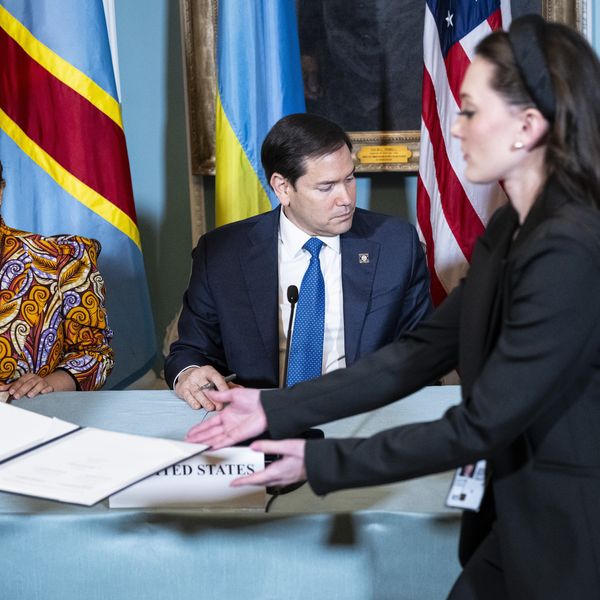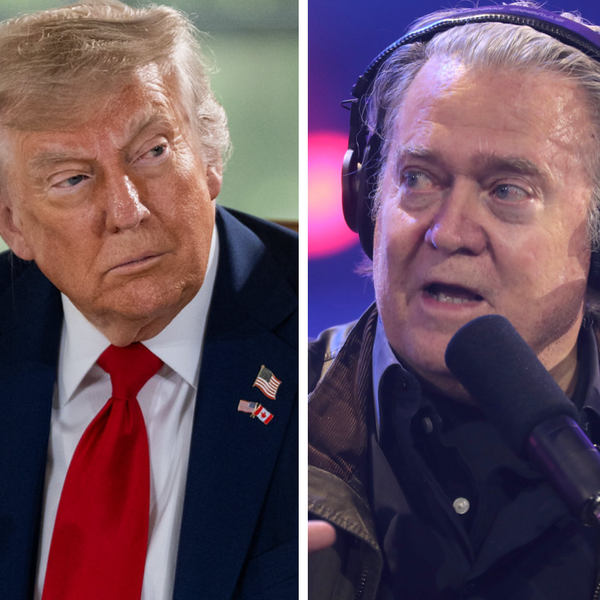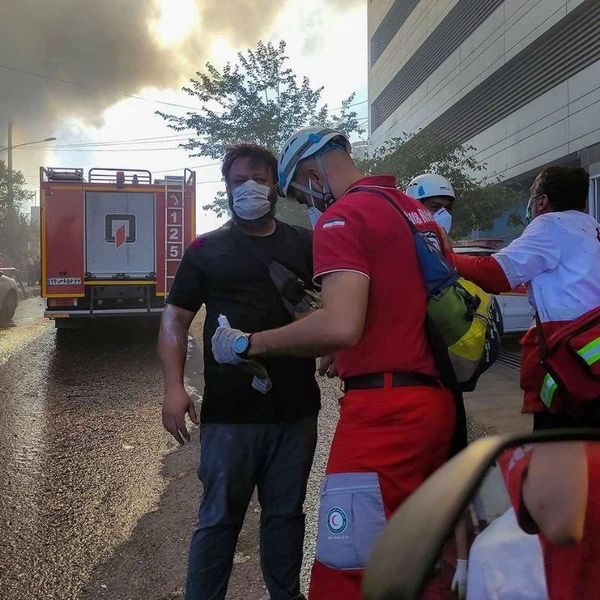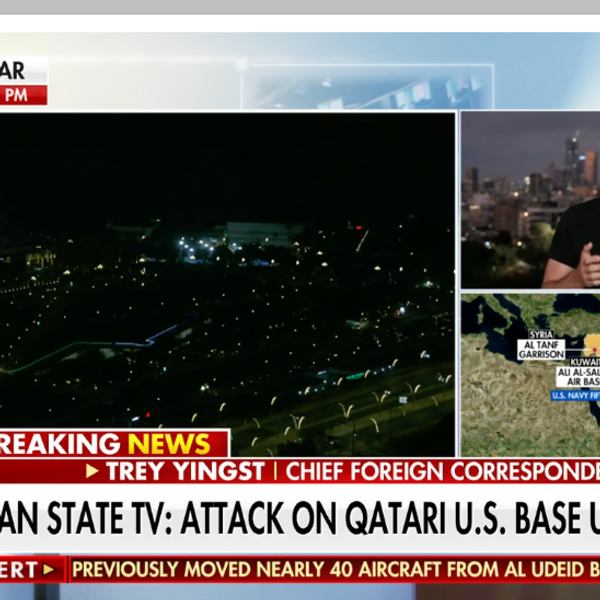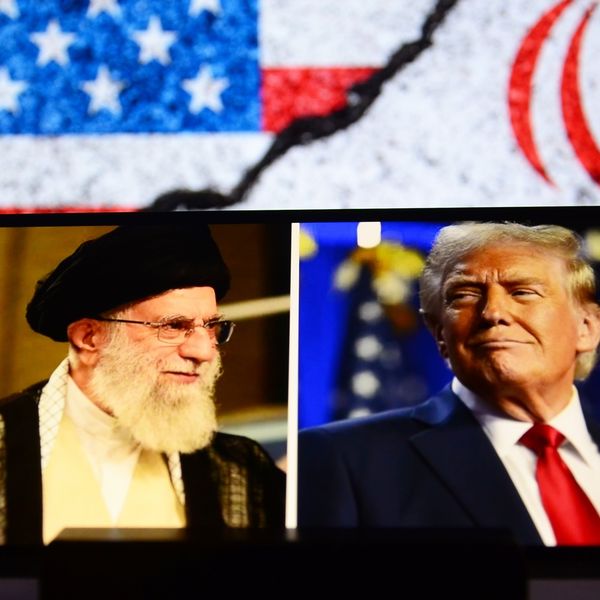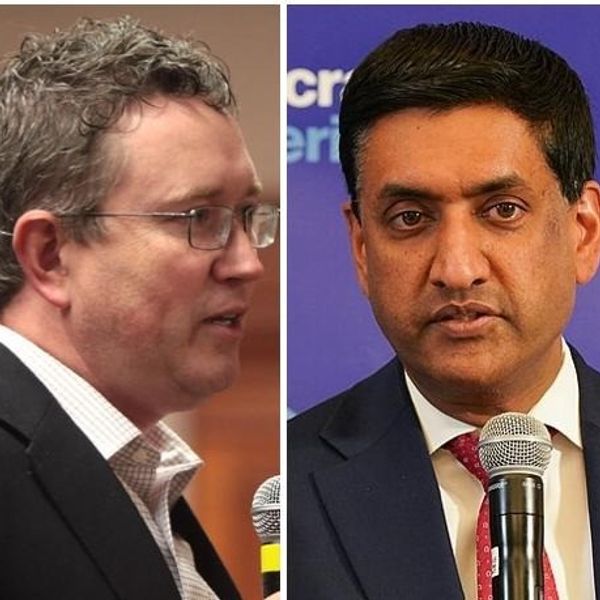The history of internationally brokered negotiations between Armenia and Azerbaijan over the disputed territory of Nagorno-Karabakh has not been a happy one. So far, the most that has been achieved are ceasefires after military victories by one side or the other: Armenian victory in the war of 1992-94, Azerbaijani victory in the war of 2020.
However, a radical change of stance by the government of Armenian Prime Minister Nikol Pashinyan now appears to offer a new opportunity for peace — but only if the rights and physical security of the Karabakh Armenians can be guaranteed. This presents a challenge and an opportunity for the United States, the European Union, and the United Nations.
Pashinyan, who came to power following the 2018 “Velvet Revolution,” effected a major shift in Armenia’s position on a final settlement by offering to recognize the territorial boundaries of Azerbaijan, including Nagorno-Karabakh — something his predecessors had always sought to avoid.
While speaking to reporters on May 22 in Yerevan, Armenia’s capital, Pashinyan noted that he is seeking an “international mechanism” for dialogue between Baku and the Karabakh Armenians to ensure the latter’s rights and security if and when an agreement is signed.
Recent weeks have indeed seen a flurry of separate high-level talks between Armenia and Azerbaijan, brokered by the United States, the European Union, and Russia — none of which has yet produced the much-sought-after comprehensive peace deal. The ultimate success of any agreement is also a domestic issue for the United States and France, given the large and politically powerful Armenian diasporas in both countries.
Tens of thousands of indigenous Armenians remain in Nagorno-Karabakh, despite the second war over the disputed region when Azerbaijan, backed by Turkey, conquered some territory in the enclave itself, as well as the surrounding regions that Armenian forces had captured during the first war. This was then consummated in a Russian-brokered ceasefire in November 2020 which guaranteed further territorial gains for Azerbaijan in and around the enclave. Since then, the remainder of Armenian-controlled Nagorno-Karabakh has been protected, albeit inadequately, by Russian peacekeepers under the oft-violated ceasefire.
Getting to a final peace accord on Pashinyan’s terms won’t be easy. Since last December, Azerbaijan, first through state–backed “eco-activists” and more recently with the construction of a checkpoint, has been effectively blockading the only road connecting Nagorno-Karabakh to Armenia and the outside world. This action, widely condemned (including by the International Court of Justice), has resulted in an already-threatened population suffering severe shortages of energy, medicine, and food. The International Committee of the Red Cross, which was still able to enter Nagorno-Karabakh before Azerbaijan installed the checkpoint, is now reporting difficulties in entering the enclave and delivering essential aid, although medical evacuations appear to be resuming.
Washington should now consider how it can facilitate the delivery of humanitarian aid to the Karabakh Armenians, whether via an airlift or other means.
It is crucial that the United States and the EU — having already chosen to reinvigorate the diplomatic process between the two nations — press for an agreement that will secure the appropriate protection of the indigenous population through internationally-backed dialogue between Karabakh Armenians’ leaders and Azerbaijani authorities. If the re-incorporation of Nagorno-Karabakh into Azerbaijan were to lead to the ethnic cleansing of its Armenian population, Armenians both in the Republic of Armenia itself and in the diaspora would never accept the result. Armenia would most likely do what Azerbaijan did between 1994 and 2020 — re-arm in order to resume the war at some favorable moment in the future.
The consequences (not least for the U.S.) of an agreement that fails to at least include guarantees that Pashinyan is seeking for the Karabakh Armenians will almost certainly result in further bloodshed that could eventually draw in other regional powers, including Iran, Turkey, Israel, and, of course, Russia, which is not keen to see its presence in the South Caucasus diminished.
Already, and despite the obvious current reality of Azerbaijani military superiority and Russia’s apparent inability to strictly enforce the 2020 ceasefire terms, Pashinyan is taking a colossal political risk by his shift in Armenian policy. Given that previous governments in Yerevan pursued a policy akin to strategic ambiguity – never officially recognizing the de facto state in Nagorno-Karabakh that Armenians call the Republic of Artsakh, while also acting as its main patron and guarantor – Pashinyan’s new proposal has come as a most unwelcome surprise to his population.
According to a recent poll by the International Republican Institute, almost seven in ten Armenians disapprove of their government’s policy towards Nagorno-Karabakh. In another poll taken last November, virtually no one supported the incorporation of Nagorno-Karabakh into Azerbaijan. For its part, the de facto government in Nagorno-Karabakh has voiced its strong opposition to Pashinyan’s policy.
It will be the responsibility of Pashinyan and his government to explain to Armenians why the current reality is not in their country’s favor and how to reconcile this situation with their previous policy declarations. But Washington, along with the EU and the UN, should test the viability of Pashinyan’s initiative by pressing Azerbaijan for the guarantees he seeks regarding the rights and security of Karabakh Armenians so as to push forward the overall negotiations and the anticipated agreement’s approval by Armenia’s state structures if and when one is reached.
According to Benyamin Poghosyan, Chairman of the Center for Political and Economic Strategic Studies and Senior Research Fellow at APRI, a Yerevan-based think tank, the only way to achieve stability is by convincing Azerbaijan to accept an “international presence” in Nagorno-Karabakh. Indeed, Anders Fogh Rasmussen, former Secretary General of NATO from 2009 to 2014, during a recent visit to Armenia stated that “we will need to have a kind of an international mechanism to monitor, control and guarantee those rights and security for the people of Nagorno-Karabakh.”
While Azerbaijani President Ilham Aliyev insists that Karabakh Armenians will be given the same rights as all Azerbaijani citizens – not the most enticing assurance given his regime’s notoriously repressive human rights record – he has opposed an international presence on the grounds that any discussion regarding Nagorno-Karabakh constitutes interference in Baku’s internal affairs. Aliyev’s recent comments on the subject epitomize his maximalist position.
However, the U.S. possesses diplomatic and economic leverage – such as the ability to revoke the Section 907 waiver, suspend Department of Defense military sales and support to Azerbaijan, and impose visa bans – over Aliyev and his cronies that could be utilized as a stick behind closed doors to encourage Baku’s cooperation.
Given the increased attention to the conflict by the EU, which recently sent a two-year civilian monitoring mission to the Armenian side of the border with Azerbaijan, Brussels has an opportunity to assume more responsibility in the region, with U.S. backing. Given the increase in tensions between Moscow and the West, Russia is highly likely to oppose any Western-dominated peacekeeping operation. Thus, the Biden administration should consider advocating for the deployment of a long-term UN peacekeeping force recruited of neutral states to act as guarantors of a final peace accord and the rights and security of Karabakh Armenians.
A neutral UN presence is necessitated by Russia’s position. Having inserted its peacekeeping forces into Nagorno-Karabakh with a five-year mandate, as stipulated by the ceasefire agreement, Russia’s leadership accuses the West of pushing for an agreement between the two parties designed to remove Russia’s presence and influence from the South Caucasus while it is distracted by its war in Ukraine. In subsequent deliberations, the West should make clear that this is not its intention given that facilitating a final settlement between Armenia and Azerbaijan is challenging enough as it is.
Editor's Note: Artin Dersimonian was an intern at the Armenian Embassy in Washington in 2018. The Terjenian-Thomas Assembly Internship Program at the Armenian Assembly — which is mentioned in the QI brief on which this article is based — facilitated Dersimonian's internship with the embassy.
